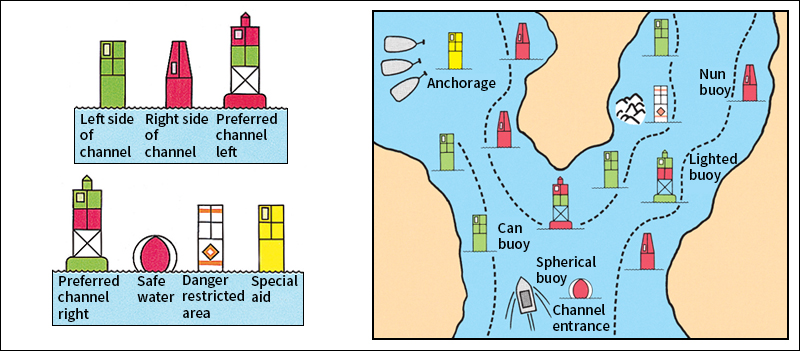Buoy << boy or BOO ee >> is a floating object which is anchored in the water to guide ships. Buoys help ship captains and pilots to steer safely in harbors, rivers, and other bodies of water. All ships carry charts showing where buoys are located, and what kind they are.
Different kinds of buoys are used for different purposes. In U.S. harbors, red buoys mark the right side of a channel for a ship entering a harbor. Green buoys mark the left side. Red and white buoys mark safe water. Buoys with an orange diamond on white are information markers or regulatory markers. They may be used to show a danger spot or a restricted area. Yellow buoys mean that special information can be found on charts or learned from other sources. In some other countries, green buoys mark the right side and red buoys mark the left side of a returning water route.

Buoys also differ in shape. Can buoys are metal cans shaped like cylinders with flat tops. Metal nun buoys are shaped like cones. Green buoys are can buoys. Red buoys are nun buoys. Both can and nun buoys sometimes have horizontal bands of green and red to show the preferred channel. Green over red means that the preferred channel is on the right. Red over green indicates that it is on the left. Red and white buoys are spheres or have a spherical red mark on top. They are usually located at a channel entrance. Buoys are usually numbered. Green buoys are given odd numbers, and red buoys receive even numbers.
Other buoys have lights so that they can be seen at night. The color of their lights and the length of their flashes tell the pilot what their signals mean. Another type of buoy gives its signal with a whistle, gong, or bell. The advantage of sounding buoys is that their signals can be heard when it is too foggy to see the lighted buoys.
See also Navigation.
